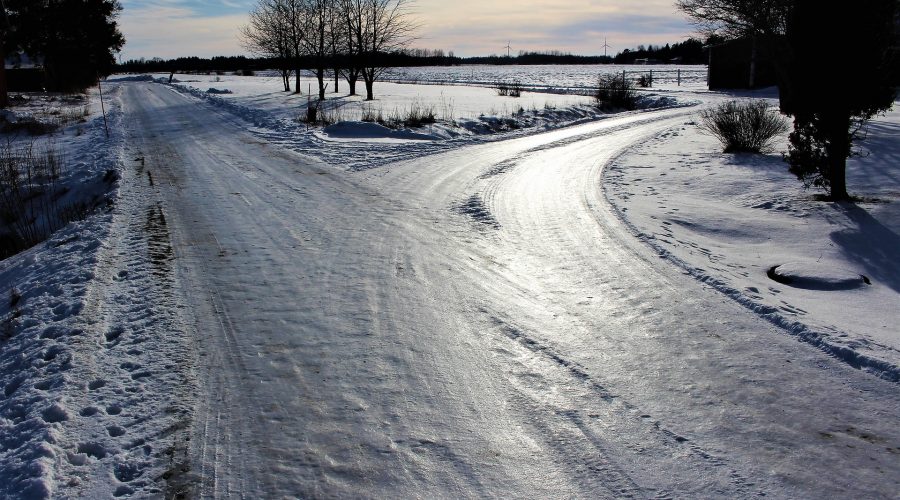
Winter HGV Safety Tips – Learning from Storm Emma
Unless you’ve been lucky enough to be away on holiday or driving somewhere warm, it’s unlikely you’ll have missed the news about the recent winter weather bringing the UK to a standstill.
During three days of Storm Emma alone, there were an estimated 8,260 road collisions, although statistics seem to be going up even without extreme conditions. In 2016, there were over 44,000 recorded road casualties amongst those driving for work. With domestic road freight activity reaching record highs over the last couple of years, safety concerns are at an all time high for HGVs.
During inclement weather, the number one tip is usually not to drive unless it’s ‘essential.’ Unfortunately, for those of us in haulage, every trip is essential so all we can do is plan ahead and prepare. Whether you’re fearing further snow flurries or just want to be ready for more wintry weather later in the year, here are our top winter HGV safety tips:
Plan Ahead & Make the Most of Daylight
Planning ahead and knowing your approximate trip time is crucial for any successful winter journey. While you might not be able to find out the latest weather conditions until the last minute, having alternative routes in mind or ensuring you give yourself longer than normal to complete a journey can both help to keep you safe and on time.
Try to get as much of the journey as possible done in daylight hours. According to the NHTSA, the risk of traffic deaths is three times greater at night than during the day. Not only does night driving impede already poor visibility, even lower temperatures and ice are more likely.
Stay Up to Date
Keeping abreast of the latest updates is crucial to avoiding any problem areas or traffic caused by winter accidents. Waze is one of our favourite apps for keeping up to date with traffic as its user-generated content means that information is much more up-to-date than other navigation apps. MyRadar Weather Radar is also great for keeping an eye on what weather is heading your way in real time and is available for both Apple and Android phones.
Prepare Your Vehicles
Clearing snow and ice off your vehicles is crucial to maintain optimum visibility. It is vital that you make sure that all windscreens, mirrors and lights are completely clear of snow so that you can see others and others can see you.
It’s also a good idea for drivers to prep the cab with anything they might need in case of an emergency including: a shovel, blankets, torches, food and drink supplies, spare chains or snow socks and sunglasses in case of glare.
Lower Your Speed & Increase Your Distance
As with any vehicle, HGV drivers must drive more slowly in winter, with stopping distances in icy conditions estimated at ten times the normal distance. HGV drivers must also take into consideration that any heavy loads will increase this distance even further and therefore leave even more time to stop safely.
Brake, Accelerate & Steer Gradually
The safest way to drive in winter is to avoid any sudden movements, including sudden braking, turning, or accelerating. Those in heavy vehicles, articulated vehicles, or who have trailers attached should especially brake gently and over time to avoid skidding or sliding.
Increase Awareness of Visibility, Lights & Signs
Visibility is greatly reduced in winter conditions, which can bring thick snowfall, high winds and fog. Dipped headlights can aid visibility during heavy snow, but speed should be greatly reduced at all times and extra care should be taken at junctions and turnings in case of obscured signs.
Improve Tyre Gripping & Traction
If you know that you’re going to be driving in areas where snow or ice is likely, it may be that you need winter tyres, snow socks or snow chains. Both AutoSock and Polar Commercial stock snow socks and chains designed especially for HGVs and lorries.
Move off in second gear to avoid slipping, then drive in as high a gear as possible and use low revs – except on downhill areas where low gears and as little braking as possible should help avoid sliding.
What are the biggest concerns surrounding HGVs and winter weather?
The most dangerous aspects of driving HGVs in winter weather come down to the size and weight of your vehicle. HGVs are heavier than normal vehicles and will therefore take longer to stop, while articulated lorries in particular are prone to sliding and jackknifing. However, preparing your vehicle, driving with the weather in mind and leaving ample time to make your journey, should all go a long way to keeping you safe. Don’t commit to unrealistic journeys and ask for support from haulage partners such as ourselves when conditions become difficult. Hopefully we’re now through the worst of this winter, but it pays to be prepared for the next snowstorm! If you are still suffering a backlog from the recent weather, get in touch to see how we can help.
